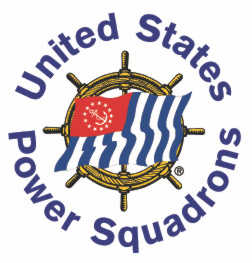 We are America's Boating Club™
We are America's Boating Club™
Become a Better Boater
Taking Your Boat Out for a Cruise on the Water?Many of the Mansfield Power Squadron members boat in the Western Basin of Lake Erie where recreational boaters enjoy traveling to the various islands that dot this end of Lake Erie as well as spending the day in one of the charming towns that are accessible by water. Before embarking on a cruise, whether a day trip or a more extended journey, make some preparations before you leave to help keep you and your crew safe on your journey. |
|
Prepare Check Lists Your lists should be individualized for your boat. These checklists should include an equipment checklist as well as a vessel systems checklist. This is a good way to make certain that all systems are in order, that needed items were not forgotten, or that critical tasks were not left undone. |
Check the Weather Make sure you have an updated weather forecast for area in which you plan to cruise. Make certain you check whether small craft advisories have been issued. |
Review Charts of the Area Familiarize yourself with known hazards along the way as well as any hazards you could encounter at your destination. |
Plot Your Course Decide on the path you plan to follow to reach your destination. Enter your waypoints on your GPS. Draw your intended course on your chart of the area. Even if you have not taken any formal plotting courses, you can still mark your directions on your chart. This will help you avoid hazards such as shallow areas, sandbars, underwater wrecks, and fishing nets. |
File a Float Plan Make sure someone knows where you will be going, your expected arrival time at your destination, and your anticipated arrival time back home. For a day trip, this can be as simple as informing a reliable person of your plans. For a more extensive trip, you should complete a written float plan that includes information such as:
|
Check All Life Jackets The law requires you to have sufficient personal flotation devices (PFD's) aboard for each person that is on board. Assign a specific jacket to each person and make adjustments for a proper fit before leaving the dock. Not only should children wear their life jackets while on board, but their PFD's should have proper neck supports that keep their heads upright should they fall overboard. All life jackets should be in good condition and easily accessible to all occupants of the boat. |
Properly Load Gear and Passengers Improperly stored gear and improperly seated people can make a boat unstable. Properly secure any loose items. Passengers should sit in seating areas with their weight evenly distributed. The combined weight of the passengers and the gear should never exceed the manufacturer's capacity rating. |
Provisions If you have perishable food aboard, you must keep it refrigerated to prevent spoilage. Keep fresh drinking water aboard when cruising in warm weather and for longer distances. The minimum amount needed is a half gallon per person per day. |
Communicate With Your Crew Before leaving the dock, tell your crew what you expect from them. If any have specific responsibilities, make certain every one understands what they are. Someone else aboard should know how to use the equipment and operate the radio in the event of an emergency. Conduct a "Man Overboard" drill so that everyone knows what must be done for a safe recovery in the event someone falls overboard. The crew must understand that the skipper of the vessel is in charge and they must follow the skipper's instructions while aboard the boat. |
Prepare and Emergency Check List Particularly for a longer cruise, prepare an emergency checklist including emergency radio procedures in the event the skipper become incapacitated during the trip. A Properly Stocked First Aid Kit is Essential |
Maintain Sufficient Fuel for Your Trip Remember the rule of 1/3's
Remember that gasoline vapors are heavier than air and often remain in the bilge. Run the bilge blower, then check to make sure you do not smell any vapors before starting your boat's engine. Warm up your engine sufficiently before leaving the dock. You cannot navigate a boat when the engine has stalled. |
Have a Wonderful Time Recreational boating is a wonderful activity for those of all ages. Safe boating helps insure that everyone can continue to enjoy our waterways. |
A great way to learn more about safe boating is to join your local squadron of America's Boating Club. As a member of a power squadron you have the opportunity to take classes. In addition, you will meet other boaters, both beginners and those with many years of boating experience. Many squadrons plan rendezvous during the boating season. This allows members and their guests the opportunity to travel together by boat to various locations. Plus you'll have a good time at the various squadron functions throughout the year. |
|

